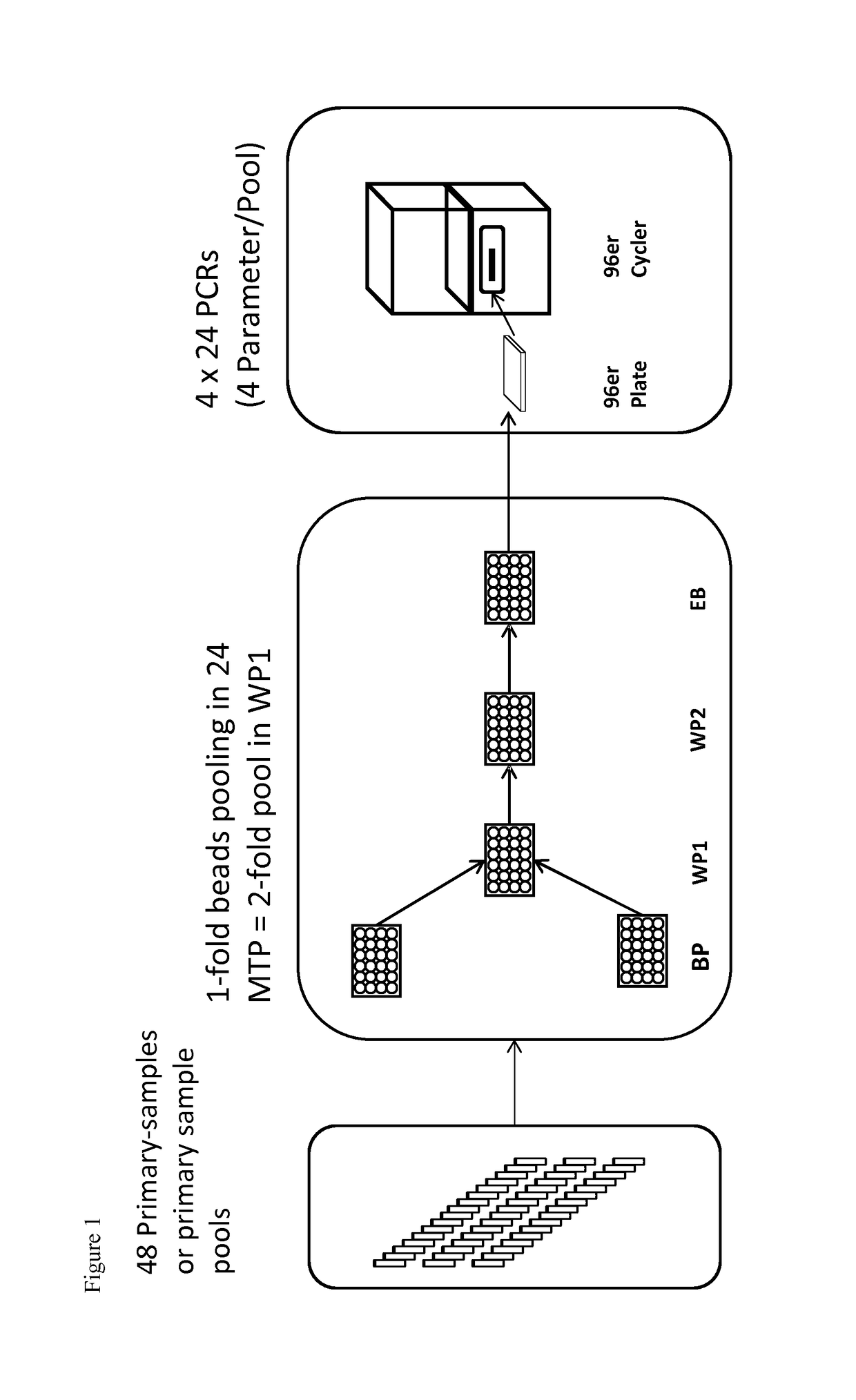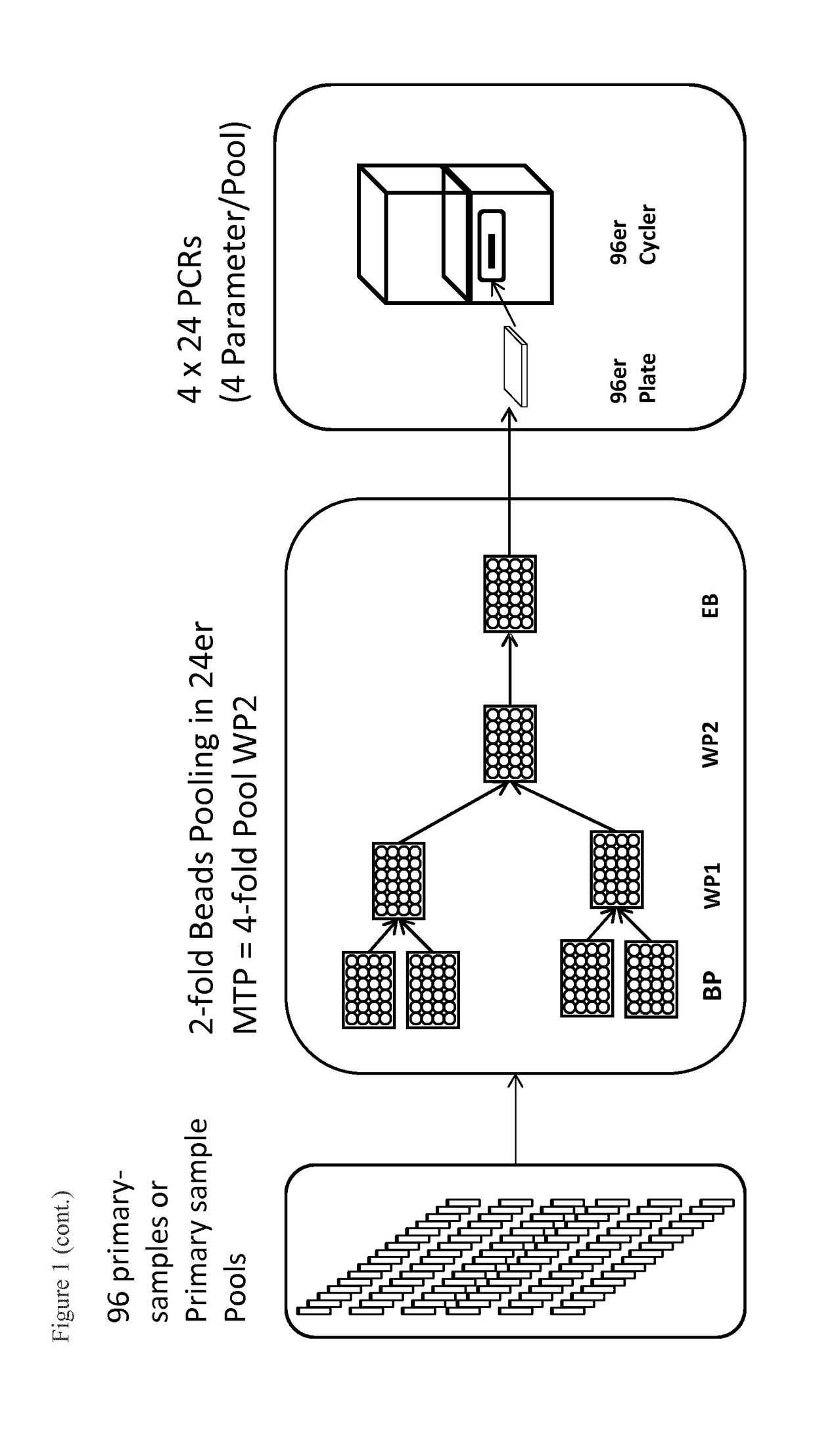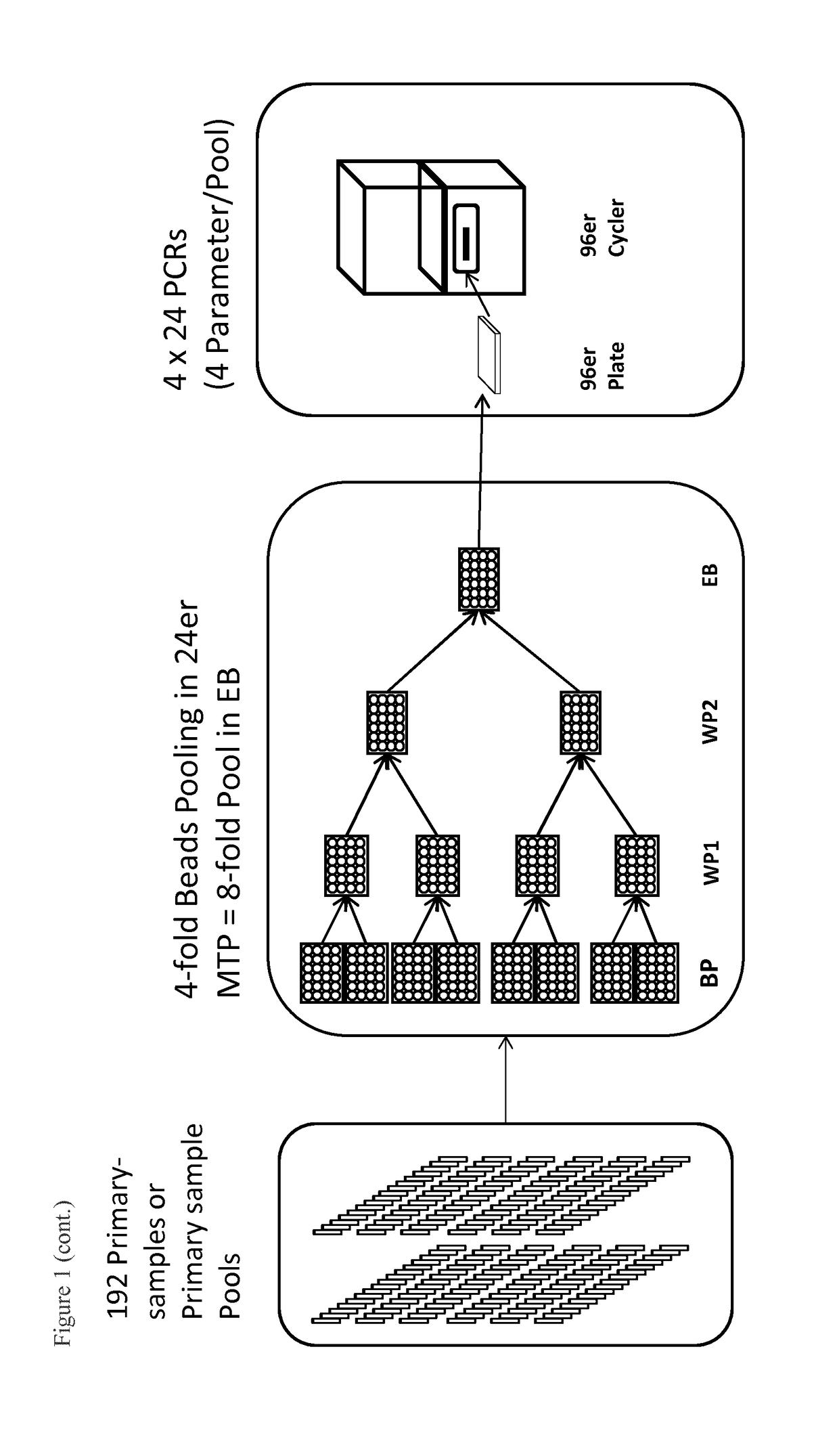Method and apparatus for automated processing of pooled samples
a pooled sample and automated processing technology, applied in the direction of microbiological testing/measurement, instruments, dna preparation, etc., can solve the problems of unfathomably low level, and unfavorable blood product application
- Summary
- Abstract
- Description
- Claims
- Application Information
AI Technical Summary
Benefits of technology
Problems solved by technology
Method used
Image
Examples
example 1
g 48 Samples (Duration Approx. 4 h)
[0081]Pooling takes place in the same automated pipetting workstation as extraction and PCR setup.
[0082]For this purpose, up to 48 primary barcode-labeled vials (EDTA Vacuette, Greiner, Frickenhausen, Germany), which were previously centrifuged (Multifuge, Kendro, Osterode, Germany) at 5,500×g for 15 min to separate plasma and cellular blood components, are moved through the pipetting robot on strip racks. Additionally, up to 48 barcode-labeled pool containers (e.g. vials) are placed on the workspace of the pipetting robot. The pipetting device is equipped with a magnetic separator for automated nucleic acid isolation. For example, the extraction of viral nucleic acids uses extraction chemistry based on magnetic particles as disclosed in German patent DE 102 58 258 A1. In addition to the 48 barcode-labeled vials, the extraction device is equipped with consumables (disposable tips, reaction vessels), extraction reagents (autoX extraction kit by GFE ...
example 2
g 192 Samples (Duration Approx. 3 Hours)
[0092]Samples are prepared manually, but this can also be performed on a pipetting platform. Extraction is performed with KingFisher Flex by ThermoFisher and the PCR setup in the present example is done manually (can also be performed on a pipetting platform).
[0093]For this purpose, up to 192 primary barcode-labeled vials (EDTA Vacuette, Greiner, Frickenhausen), which were previously centrifuged (Multifuge, Kendro, Osterode) at 5,500×g for 15 min to separate plasma and cellular blood components, are moved through the pipetting robot on strip racks. Additionally, up to 2 barcode-labeled pool containers (e.g. plate with 96 wells) are placed on the workspace of the pipetting robot. To automate the nucleic acid isolation, the pipetting device is to be equipped with a magnetic separator (KingFisher). However, since that has not yet been implemented, extraction is performed on a separate KingFisher module. For example, the extraction of viral nuclei...
example 3
2-Fold Beads Pooling
[0100]In order to provide proof for the functioning of the method, while using the extraction module (EM, device for heating the samples, magnetic separation and resuspension of magnetic particles), a 2-fold beads pooling, i.e. the combination of magnetic particles from two sample pools was performed. For this, both sample plates in a 24-well format were provided with sample pools as follows:
Plate 1:123456APOSITIVE +POSITIVE +POSITIVE +POSITIVE + ICPOSITIVE + ICPOSITIVE + ICAICICICBPOSITIVE +POSITIVE +POSITIVE +POSITIVEPOSITIVEPOSITIVEBICICICCNEGATIVE +NEGATIVE +NEGATIVE +CICICICDNEGATIVENEGATIVENEGATIVED123456
Plate 2:123456APOSITIVEPOSITIVEPOSITIVEABPOSITIVE +POSITIVE +POSITIVE +BICICICCPOSITIVE +POSITIVE +POSITIVE +POSITIVEPOSITIVEPOSITIVECICICICDPOSITIVE +POSITIVE +POSITIVE +POSITIVE +POSITIVE +POSITIVE +DICICICICICIC123456POSITIVE = Pool of 15 (assay 1) or 13 (assay 2) samples á 100 μl, respectively, 14 or 12 of these were virus negative samples (NHP) and one...
PUM
| Property | Measurement | Unit |
|---|---|---|
| Volume | aaaaa | aaaaa |
| Volume | aaaaa | aaaaa |
Abstract
Description
Claims
Application Information
 Login to View More
Login to View More - R&D
- Intellectual Property
- Life Sciences
- Materials
- Tech Scout
- Unparalleled Data Quality
- Higher Quality Content
- 60% Fewer Hallucinations
Browse by: Latest US Patents, China's latest patents, Technical Efficacy Thesaurus, Application Domain, Technology Topic, Popular Technical Reports.
© 2025 PatSnap. All rights reserved.Legal|Privacy policy|Modern Slavery Act Transparency Statement|Sitemap|About US| Contact US: help@patsnap.com



